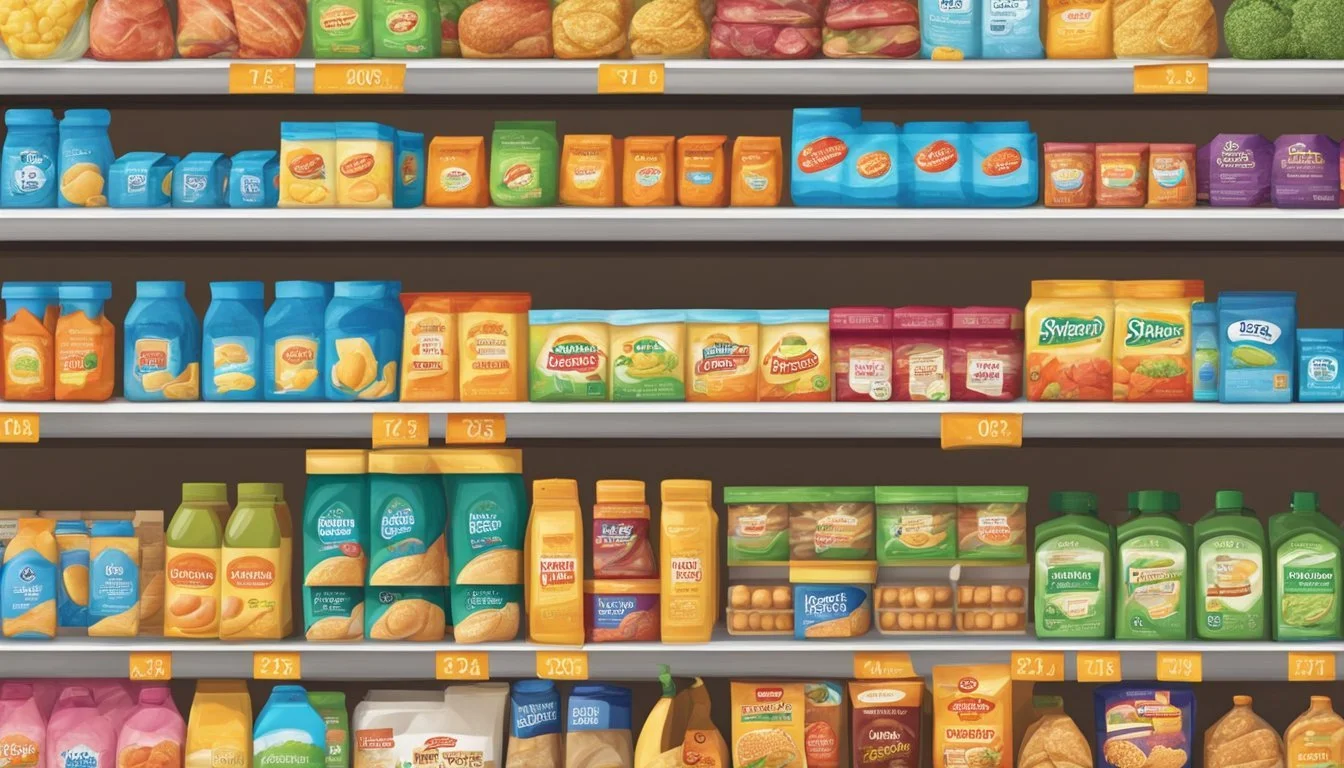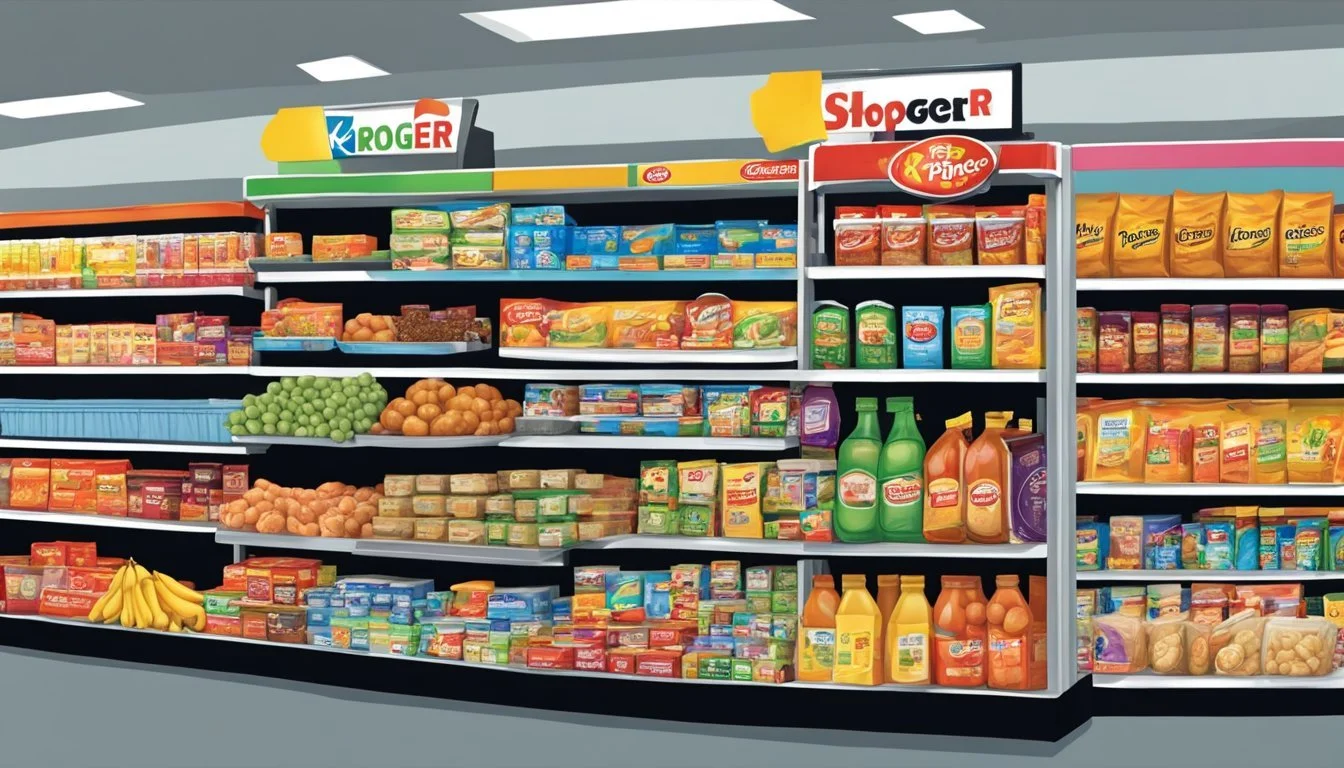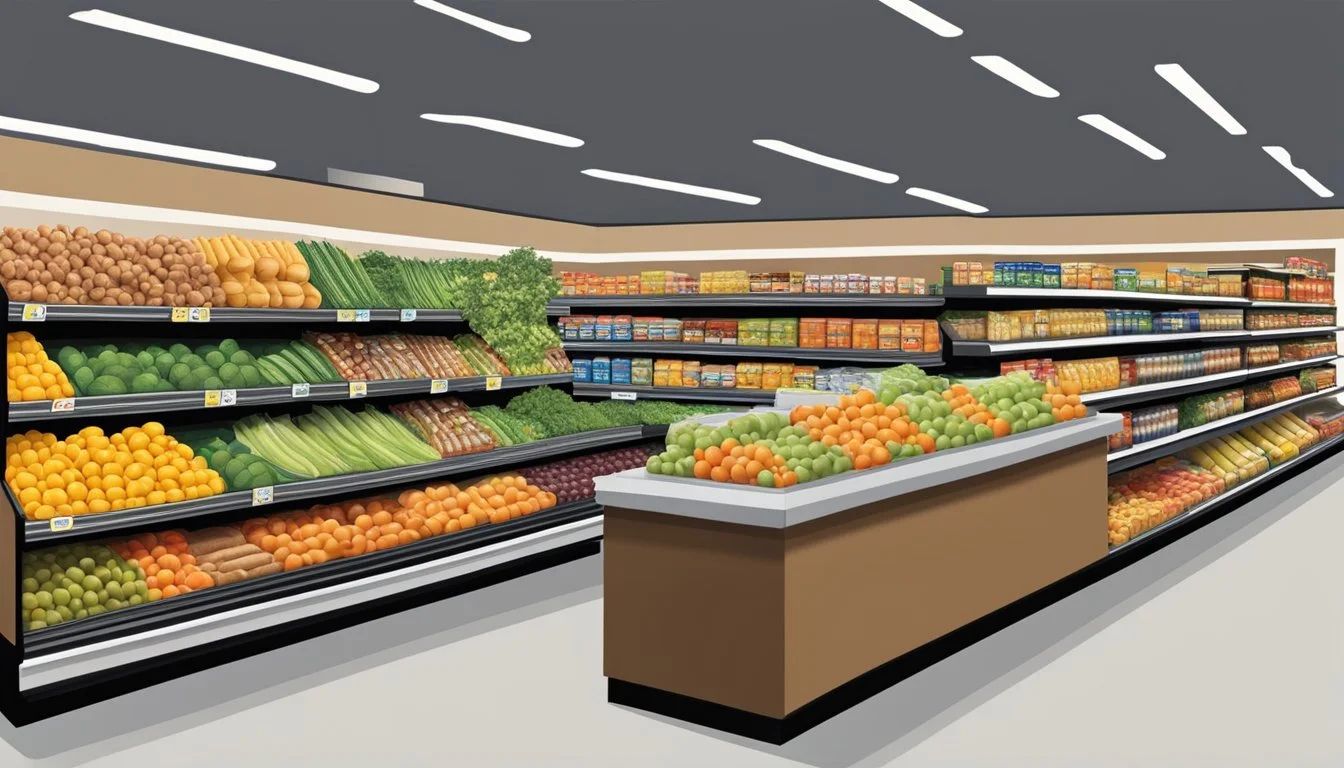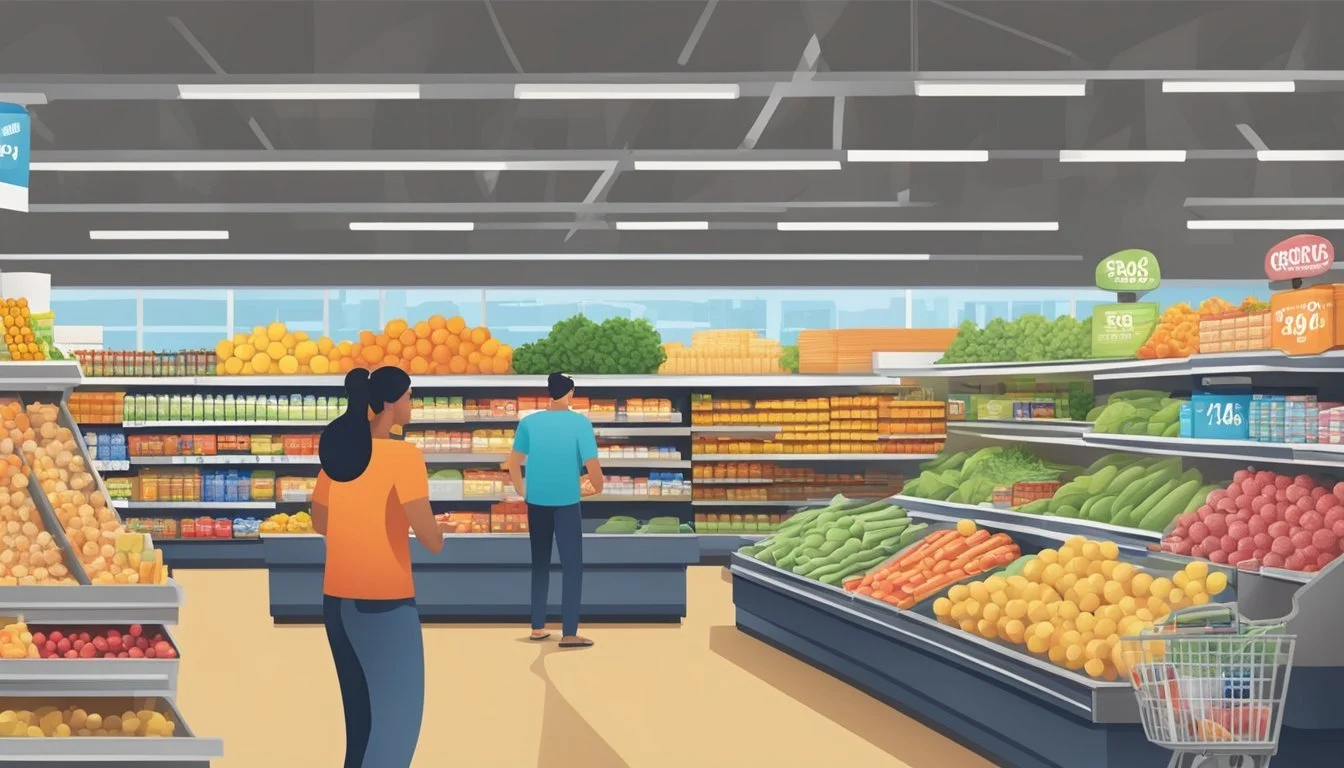Is Kroger Cheaper Than ShopRite?
Analyzing Grocery Store Prices
Part of Our Grocery Store Guide with Details on Kroger Prices and ShopRite Prices
Comparing prices between grocery stores can be an essential factor for budget-conscious shoppers looking to maximize their dollar. As consumers navigate the aisles of options, they often ponder whether regional favorites like ShopRite offer better pricing than the national giant, Kroger. Both grocery chains are established players in the American market, with Kroger boasting an expansive national footprint and ShopRite holding a significant presence in the Northeast.
Kroger, the largest supermarket chain in the United States, is known for providing a wide selection of products and often competitive pricing. On the other hand, ShopRite's reputation for affordability, coupled with a strong store-brand offering, makes it a noteworthy competitor in the price comparison. The inquiry into which store provides the better value is not just about sticker prices but also includes the quality and variety of options available to consumers.
When analyzing the pricing strategies of Kroger versus ShopRite, one must consider various aspects, such as product variety, availability of discounts, and overall shopping experience. While certain studies suggest that Kroger may offer a broader inventory, thus encouraging one-stop shopping, ShopRite's competitive pricing strategies in the Northeast are tailored to retain its customer base by delivering value. This nuanced perspective frames the comparison, offering insights without declaring a definitive leader in pricing, recognizing that individual shopping preferences and regional factors play a significant role.
Overview of Grocery Pricing
When considering the cost of grocery shopping, consumers often weigh the expense across different retailers to identify the store that offers the best value for their budget. Savings at the checkout can significantly impact a household's financial well-being.
Factors Influencing Grocery Prices
Various elements affect retail grocery pricing. Store location is pivotal; for example, ShopRite primarily serves the Northeast where the cost of living can drive prices up, while Kroger operates on a larger scale which may allow for competitive pricing due to economies of scale. Retail strategies also play a role, where stores might offer low prices on store brands to attract price-conscious consumers. Furthermore, price comparison can be influenced by sales volume, cost of operations, and supply chain efficiency.
Importance of Pricing to Consumers
For consumers, pricing is a primary factor that guides their shopping decisions. Many individuals operate within a budget, seeking to maximize their purchasing power without compromising on quality. Expensive grocery bills can strain personal finances, so consumers often look to stores like Walmart or ShopRite, which are recognized for offering lower prices compared to some competitors, leading to noticeable savings over time. Additionally, consistent low prices can foster customer loyalty and drive consumer preference in the highly competitive grocery market.
Comparison by Department
In analyzing supermarket prices, the specific departments where consumers often focus their budget include produce, meat and deli, as well as dairy and bakery. Each store’s pricing and selection can vary significantly by these departments, impacting the overall shopping experience.
Produce Section Comparison
Kroger and ShopRite both offer a variety of fruits and vegetables, but ShopRite often stands out in the Northeast for its local produce offerings. Kroger, on the other hand, tries to stay competitive by offering organic options under its "Simple Truth" label. Customers might find ShopRite's weekly specials reduce the cost on certain produce items, offering good deals for seasonal fruits and vegetables.
Meat and Deli Comparison
The meat and deli sections are critical for price comparison as they contribute substantially to the weekly grocery bill. Kroger typically offers a range of meat products, both fresh and packaged, with frequent discounts available through their loyalty program. ShopRite counters with its own set of weekly meat specials and is known for providing a robust selection of deli items, including store-branded and specialty meats.
Dairy and Bakery Comparison
Moving on to dairy and bakery goods, these staples are closely priced at both chains. Kroger has an edge with its in-house bakery and array of private-label dairy products. Meanwhile, ShopRite gains customer appreciation with fresh, quality bakery items and competitive dairy prices, sometimes edged lower with their sales promotions.
Discounts and Savings Opportunities
Both Kroger and ShopRite offer numerous opportunities for discounts and savings through weekly sales, loyalty programs, and strategic coupon usage. These measures are designed to help customers maximize their savings on groceries.
Weekly Sales Analysis
Each week, Kroger and ShopRite feature various items at a discounted price, often referred to as loss leaders, to draw in customers. Shoppers can typically find these deals in the stores' respective weekly ads. It is notable that, while ShopRite may offer a variety of deals specific to its regional presence in the Northeast, Kroger, with a broader national footprint, runs sales that can span across many of its locations.
Loyalty Programs and Benefits
Kroger has a robust loyalty program that rewards customers with fuel points for purchases made. Customers can redeem 100 fuel points for a savings of 10 cents per gallon at Kroger gas stations. Additionally, Kroger offers digital coupons which loyalty program members can easily apply to their purchases.
ShopRite also offers a loyalty program, emphasizing digital coupons and exclusive discounts to its members.
Both stores periodically run promotions that can further stack savings, like extra points or double coupon values.
Coupon and Discount Strategies
Shoppers at Kroger and ShopRite are encouraged to combine weekly sales with digital coupons and other discount strategies for enhanced savings. This involves:
Checking weekly ads for current sales and planning shopping around these deals.
Loading digital coupons onto their loyalty cards via the stores' apps or websites.
Taking advantage of "Buy One, Get One" offers and other in-store discounts that can be paired with coupons.
Strategically using these discounts in combination with each other often results in the most significant cost reductions for customers.
Store Brand Comparison
Evaluating store brands at Kroger and ShopRite is fundamental to understanding their price and quality offerings. Strategies to maintain competitive prices and quality for generic staples are crucial for these retailers.
Kroger vs Shoprite Store Brands
Kroger offers a wide range of store brands, including Kroger, Private Selection, and Simple Truth. These brands cover everything from basic groceries to organic and gourmet options. ShopRite, on the other hand, carries its own brand, which goes by the name ShopRite. It competes by offering a mix of quality and affordability, often for similar generic staples found at Kroger. Consumers report satisfaction with the quality of products offered by both store brands.
Kroger Brand Analysis
Extensive variety
Competitive pricing
Multiple tiers of quality
ShopRite Brand Analysis
Strong local presence in the Northeast
Focused on cost-effectiveness
Comparable in product range
Generic vs National Brand Prices
Both Kroger and ShopRite aim to provide lower-cost alternatives to national brands without sacrificing quality. Generic staples play a significant role in this, with prices often considerably less than their branded counterparts.
Kroger Generic Pricing
Often undercuts national brand prices
Periodic promotions and discounts
ShopRite Generic Pricing
Competitive pricing, especially in the Northeast
Frequent sales and savings for loyalty cardholders
In both stores, customers will find that generic staples typically offer substantial savings over national brands, while still maintaining a standard of quality that many find acceptable for their needs.
Regional Price Variations
The cost of groceries can shift significantly depending on the region and availability of certain supermarket chains. Consumers should be aware that geographical location plays a critical role in pricing.
Price Fluctuations by Region
In the Northeastern United States, supermarket chains like Kroger and ShopRite exhibit distinct patterns in their pricing. Various metro areas may experience different levels of pricing due to regional economic factors, transportation costs, and local competition. For instance:
Metro Area A: Kroger may offer staple goods at lower prices.
Metro Area B: ShopRite could provide better deals, especially for members of their Price Plus Club.
Geographical Availability and Reach
The presence of a supermarket chain in a specific location directly affects its pricing strategy. Kroger, primarily based in the Midwest and South, has a widespread reach that influences its ability to price competitively. On the other hand, ShopRite's stronghold is in the Northeast, where it can leverage a loyal customer base through its rewards program. Here's an overview:
Kroger Availability: Broad presence in various regions, offering competitive pricing.
ShopRite Availability: More localized to the Northeast, where it may offer special savings through loyalty programs.
Specialized Products and Organic Options
When evaluating Kroger and ShopRite, two key factors for consumers are the cost of organic products and the range of specialized goods available. These variables influence shopping preferences based on individual needs and values.
Price Comparison of Organic Products
Kroger is recognized for offering competitive prices on organic produce. Reports place Kroger in a favorable position for having the cheapest organic produce compared to other U.S. grocery chains. Organic shoppers can find a variety of frozen items, canned foods, produce, meats, bread, and dairy that adhere to the standards of the National Organic Program at Kroger. However, it's noted that while Kroger provides affordable options for organic food, it may not always be the best value in terms of overall purchasing costs.
In contrast, ShopRite may not specifically stand out for its organic produce prices but does offer a considerable range of options. Their store brand is known to be a budget-friendly choice for those seeking organic products.
Variety and Availability of Specialized Products
ShopRite features an extensive selection of brands and products, catering to a variety of consumer needs including specialty and international items. This wide selection is a hallmark of their commitment to satisfying the diverse preferences of their customer base.
Kroger, although not specifically highlighted for its selection of specialized products in the provided search results, has been expanding its range of natural and organic goods. They have a dedicated line known as "Simple Truth", which emphasizes organic and natural products, meeting the demands of customers looking for high-quality produce and specific dietary options.
Value Added Services
When comparing Kroger and ShopRite, it is essential to consider how each brand enhances the shopping experience through additional services such as grocery pickup and delivery along with customer service quality.
Grocery Pickup and Delivery Services
Kroger offers ClickList, a service where customers can shop online and have their groceries loaded into their car at a scheduled pickup time. Kroger also partners with third-party delivery services, providing the convenience of home delivery. In contrast, ShopRite provides a similar service called ShopRite from Home, allowing customers to place orders online and either pick them up or opt for delivery. ShopRite's delivery options may vary by location, but they aim to offer flexibility with scheduling and same-day service options.
Kroger:
Pickup: Available (ClickList)
Delivery: Available (Third-party services)
ShopRite:
Pickup: Available (ShopRite from Home)
Delivery: Varies (Same-day options may be available)
Customer Service Comparisons
Customer service stands as a critical pillar for both grocery chains, impacting the overall satisfaction and convenience at the checkout. Kroger prides itself on fast checkout solutions such as Scan, Bag, Go and self-checkout stations, aiming to reduce wait times. ShopRite's commitment to service is reflected in their well-staffed stores and the efficiency of their checkout process, often employing technology to enhance the customer's experience.
Kroger:
Checkout: Scan, Bag, Go; Self-checkout options
Service: Generally regarded as fast and efficient
ShopRite:
Checkout: Technologically aided for efficiency
Service: Noted for staff availability and assistance
Market Basket Analysis
Market basket analysis provides a method to compare grocery prices by assessing the cost of a selection of common items that customers typically buy together. This section explores two main aspects: the average cost of a common grocery basket and the price of staple items at Kroger versus ShopRite.
Average Cost of Common Grocery Basket
A common grocery basket typically includes a variety of items such as dairy, produce, meat, and pantry staples. Using this basket, one can compare the overall cost of groceries at Kroger and ShopRite. For example:
Dairy: Milk, cheese, yogurt
Produce: Fruits, vegetables
Meat: Chicken, beef
Pantry Staples: Bread, rice, pasta
Comparative data may show that the total cost of this basket at Kroger is $X, while at ShopRite, it is $Y.
Price of Staple Items
Focusing more narrowly, the analysis of the price of staple items can indicate which store generally offers better value for daily essentials. Here, prices of staple groceries like milk, bread, and rice are considered individually. Listing the prices side by side gives a clear price point comparison.
For instance:
Item Kroger Price ShopRite Price Milk $X.xx $Y.yy Bread $X.xx $Y.yy Rice $X.xx $Y.yy
Individual staple items may vary in price, which could influence a shopper’s decision on where to purchase their weekly groceries.
Broader Retail Comparison
When assessing the affordability of Kroger and ShopRite, it is essential to consider their pricing in the context of larger competitors including Walmart and Aldi, as well as the evolving landscape of online retail.
Kroger and Shoprite vs Walmart and Aldi
Walmart is known for its competitive pricing, often emerging as the most cost-effective option for consumers. With a vast network of stores nationally, Walmart's economies of scale allow for lower prices on a basket of goods. The search resulted in a shopping basket costing $119.44 at Walmart.
Aldi, a discount supermarket chain, consistently offers low prices and was noted as the cheapest option in previous price comparisons. Their business model hinges on high efficiency and a limited variety of mostly private-label products, which translates to savings for customers.
Target and Whole Foods also play a part in this broader comparison. While Target offers competitive pricing in many categories, Whole Foods is often seen as a high-end retailer with comparable or higher prices than both Kroger and ShopRite. They tend to focus more on quality and organic offerings, appealing to a different segment of the market.
Comparison with Online Retailers
The advent of online retailing introduced by players like Amazon has transformed the grocery landscape. Amazon's acquisition of Whole Foods has integrated the convenience of online shopping with the promise of high-quality grocery products. However, while online shopping offers convenience, prices may not necessarily be lower than store offers when considering shipping costs and membership fees.
Online platforms often have dynamic pricing, which can result in fluctuations in product costs, sometimes offering deals that traditional supermarkets may not match. However, many consumers still prefer physical stores for their grocery shopping due to the immediacy of the purchase and the option to personally select fresh products. The evolution of supermarkets into the digital realm is a space to watch as it continues to develop.
Consumer Perspectives and Ratings
Kroger and ShopRite are both recognized for serving unique customer bases, with varying perspectives on pricing and satisfaction. Consumers actively share their experiences and satisfaction levels, contributing to the overall reputation of each store.
Customer Reviews and Satisfaction
Customers often express their opinions through reviews, shaping the public perception of Kroger and ShopRite. ShopRite's customer base largely appreciates their competitive pricing and strong store brand offerings, as noted from the search results. In contrast, consumers rate Kroger with a 2.7 out of 5, indicating mixed feedback about their shopping experiences. ShopRite slightly surpasses Kroger with a rating of 2.8, suggesting a marginally better customer satisfaction.
Expert Ratings and Recommendations
Experts who have surveyed grocery stores typically use price comparisons and other objective criteria to issue recommendations. According to the search results, experts have found that stores like Walmart tend to offer lower prices than both Kroger and ShopRite, while ShopRite is noted to be 18 percent more affordable than Acme, indicating a position as a cost-effective choice. These findings reflect the focused efforts of each chain to deliver value to their customers and suggest that while Kroger and ShopRite have their own strengths, there are other competitive options in the market for cost-conscious consumers.
Conclusion
In assessing Kroger and ShopRite, it is clear that both chains offer unique advantages in saving strategies for a family's groceries budget. Kroger, as the largest U.S. supermarket chain, tends to rank well for overall value due to its vast product selection and frequent promotions. Kroger’s stores often feature various in-house brands that cater to cost-conscious consumers.
Conversely, ShopRite maintains a stronghold in the Northeast with competitive pricing and a strong private label assortment. Shoppers at ShopRite benefit from weekly deals and a reputation for offering value on everyday items. Though smaller in scale, ShopRite's localized approach to marketing and pricing can sometimes result in more cost-effective options for regional customers.
It is crucial to consider individual shopping habits and local store offerings when determining which store can be more cost-effective. Factors like store brand quality, sales frequency, and rewards programs contribute to the overall cost of groceries. Additionally, the price of specific items can fluctuate, making one store cheaper for certain products while another may be more economical for different purchases.
Families looking to maximize their savings would benefit from comparing both chain's weekly ads and leveraging loyalty programs to their fullest potential. The decision between Kroger and ShopRite ultimately depends on the shopper’s location, brand preferences, and shopping style.










